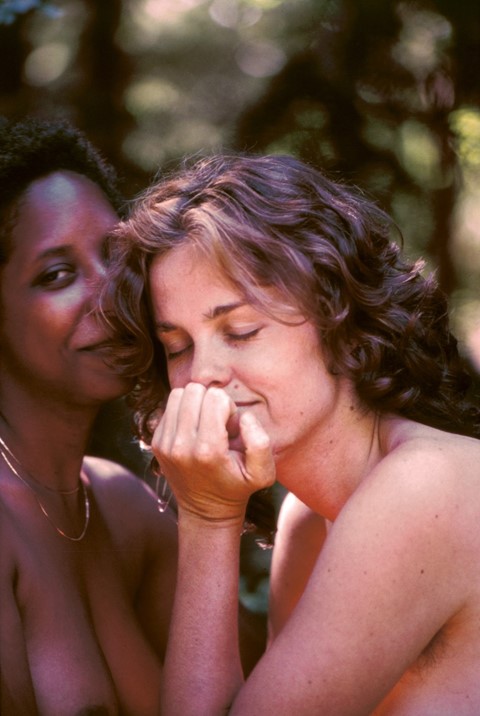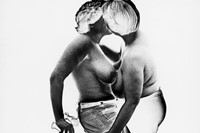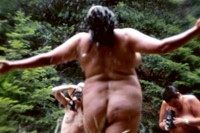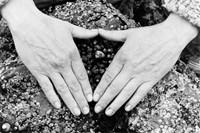Published by Mack, A Forest Fire Between Us catalogues Tee Corinne’s radical and expansive practice as one of the foremost lesbian photographers of her time
“Sometimes I think I have the wrong kind of personality to be making art out of sexual imagery,” writes photographer Tee Corinne in an artist statement from 1993. “I don’t like confrontation, don’t like negative public commotion.”
As an artist, writer, self-trained art historian and activist, Corinne’s work traversed several categories, but a deeply felt erotic power remained at the heart of everything she did. From 1974 until her death in 2006, she was devoted to creating and celebrating the delight of intimacy between women. Not only did she use art as a way to clarify and make sense of her own queerness, but she also filled the gap in affirming lesbian sexual imaging. In doing so, Corrine cultivated a lesbian visual history that provided queer women with a mirror in which they could see their true selves in a world that often sought to erase or fetishise them.
A forest fire between us, a new book published by Mack, catalogues Corinne’s radical and expansive practice, compiling a collection of photographs, slides, contact sheets, and ephemera uncovered from her archive that gesture towards her status as one of the foremost lesbian photographers of her time.
Growing up in the American South, Corinne came of age amid tumultuous and exciting times. Her student years coincided with the second-wave feminist movement – something she embraced wholeheartedly when she moved to San Francisco. “I feel like this was the crucible where Tee forged her lifework,” editor Charlotte Flint tells AnOther. “It was a place where she was surrounded by like-minded people – friends, lovers, artists, academics – who helped her emerge from a period of profound depression. She described these years as a ‘coming out process’, where she became romantically involved with women again, joined the women’s movement and started working in sex education for volunteer-run sex advice hotlines, and later illustrating sex manuals including Loving Women (1975) and compiling a collection of vulva art which she aptly titled The Cunt Coloring Book.”
In the early 1980s, Corinne travelled to South Oregon at the invitation of Ruth and Jean Mountaingrove, a lesbian couple who had established a ‘Womyn’s land’ – as rural separatist communities were then called – where they published the magazine Womanspirit. “Much like San Francisco, these lands were important sites for feminism and for the exploration of lesbian sexuality. They were also the setting for DIY photographic and self-published radical magazines,” says Flint.

One such project was the Feminist Photography Ovulars, a series of low-tech workshops co-facilitated by Corinne, that encouraged women to learn about image-making and nurture their creativity outside of patriarchal structures. The images that emerged – many of which are collected in A forest fire between us – are revelatory, bursting with joy, humour, freedom, and acceptance. Corinne’s photo series, Isis, is one such example. Best described as a collection of landscapes, these photos feature fleshy vulvas camouflaged against trees, clouds and glassy lakes in a biophilic conflation of nature with the female and erotic. Elsewhere in the publication, her sympathetic lens settles on a documentarian approach, capturing naked couples in supine embraces, sharing in moments of desire, playfulness, and tenderness.
Flint recalls her first encounter with Corinne’s work: “In 2019, I was working on a project with the Feminist Library in London when Minna Haukka – their artist in residence – presented a black and white image that immediately captivated me. It reminded me of Man Ray’s early 20th-century solarised images.” The dizzying constellation of forms that Flint was admiring were in fact intertwining body parts: thighs, arms, breasts. The solarised image depicted two women being intimate with each other, and was taken from Corinne’s 1982 book Yantras of Womanlove.
Solarisation was a technique that Corinne returned to time and time again, admiring the way in which it lit subjects from within, faithfully conveying the transcendental sensation and pleasure of the erotic act depicted. But it wasn’t just an aesthetic choice. “Solarisations also partly obscured the identity of the women in her photographs,” says Flint, “ensuring that they remained anonymous at a time when being openly gay was still heavily discriminated.”
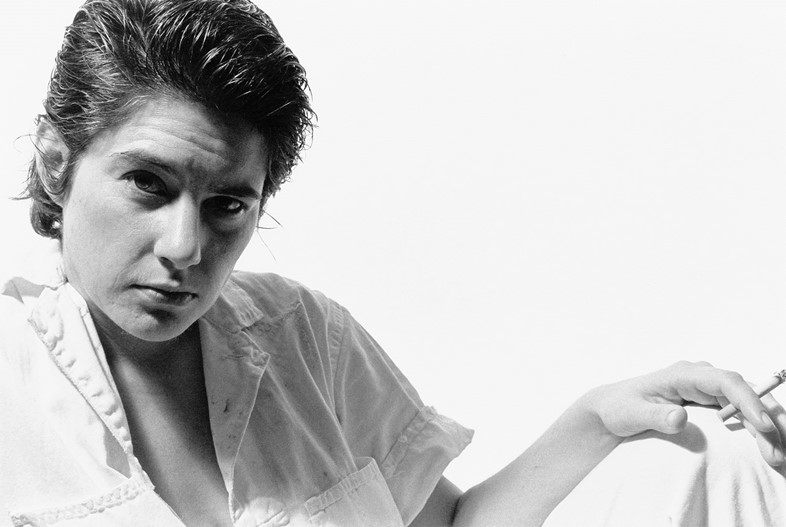
The overwhelming impression of Corinne’s oeuvre is one of profound joy and equanimity that speaks to the incredible community that she and her fellow artists, writers and activists – from Audre Lorde to Joan E Biren (JEB), Ruth Mountaingrove to Honey Lee Cottrell – fostered. They were charged with creating an empowering, sexy, true vision of what it meant to be a queer woman in the world. For Corinne, the camera, and its capacity for reflection was a vehicle to autonomy, a way of establishing a narrative that expanded sexual consciousness and could not be erased. A forest fire between us not only highlights how Corinne redressed the politics of visual representation, but also celebrates her unique understanding of the ways in which play and pleasure can come together to create something radical.
Tee A Corinne: A forest fire between us by Charlotte Flint is published by Mack, and is out now.
